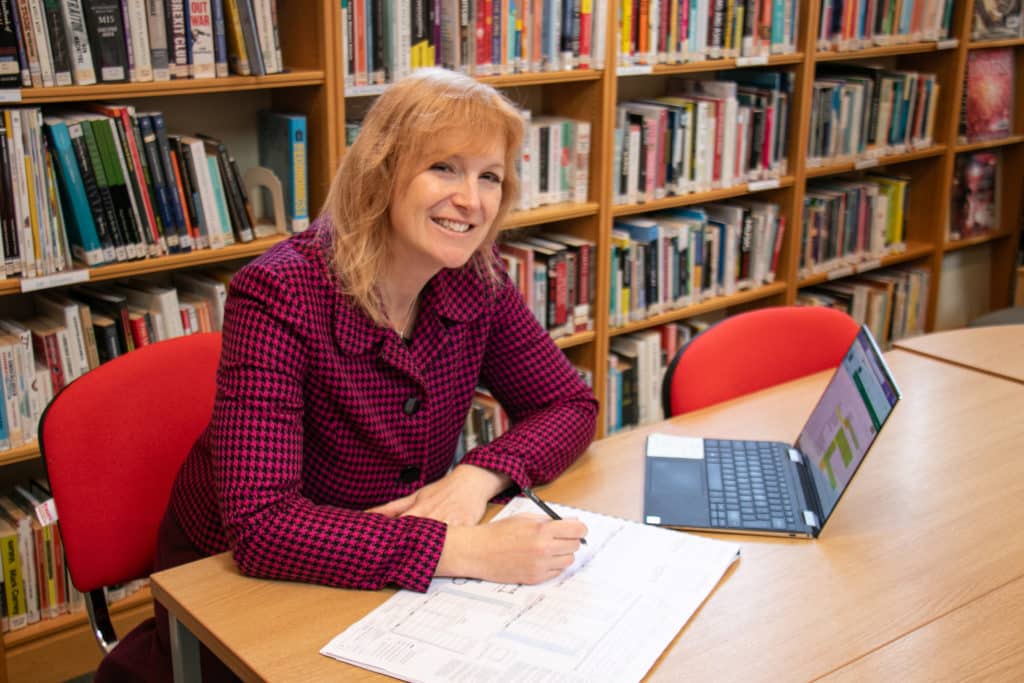
We spoke with Emily Stannard, who leads the team in the Garrett Library that will manage St Andrew’s when it opens for use in Spring 2024. Emily is a qualified chartered librarian, but is not perhaps the librarian you remember from your time at school. Whilst Emily has visited libraries since she was a child and was an avid library user at the University of Warwick, studying for her first degree in English and European Literature, she understands that the library is not necessarily a draw for everyone. So, this is where she, her team of information professionals, and St Andrew’s will make the difference. Emily is keen to make sure that St Andrew’s is accessible and relevant to all, irrespective of a pupil’s year group, study preferences, or whether the pupil is a habitual or infrequent user of the Garrett Library. St Andrew’s will be a space for everyone.
I think that it’s really important to meet your users at the point at which they are, rather than at the point you might expect them to be
Emily’s conviction to create this all-embracing learning experience, comes from her own mixed relationship with the facility. When she was at secondary school Emily explains that the library was run by a classics master whom she found terrifying. She never felt at ease, fearful of making a noise and dreaded using the building. Contrasting this experience with that of university, where she learned how to embrace the opportunities, she vowed to break the school library stereotype and be a different kind of librarian – or information professional.
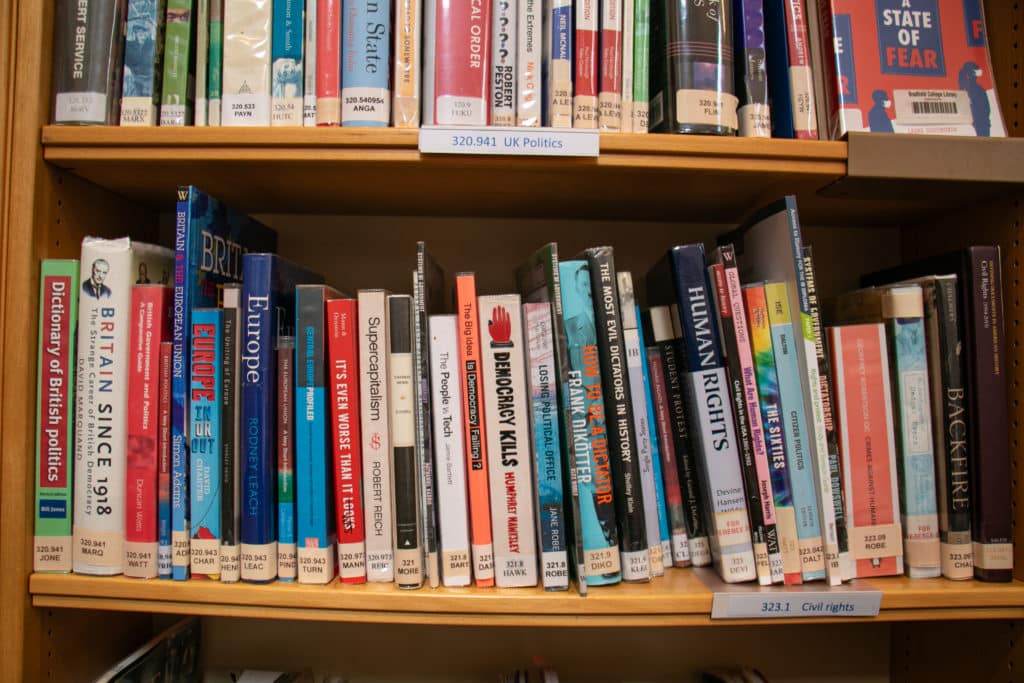
Emily’s first role after receiving her Masters degree was running library inductions in a further education college for vocational courses, everything from mechanics to fashion design and music. The attendees were not perhaps your traditional library-going types, but she wanted to find out how she could make the library relevant and accessible for them. So, she spent time talking to the various groups of students to find out what they were interested in, and what they needed and developed a concept of what ‘library support’ looked like for them. She quickly realised that people didn’t just come to a library for the information on the shelves, they came to meet up with their friends and fellow coursemates, they came to share ideas, do projects, and make plans.
‘St Andrew’s will be home to around 11,000 books, but it will not be a library’
St Andrew’s Concept, Neil Burch, Senior Master & Learning Design Lead
St Andrew’s may not be a library, but of course the books will still be very important. These books will be the mainstay of the current collection that is housed in the Garrett Library, carefully curated to really meet the needs of the curriculum whilst at the same time retaining books of historical value and significance. In fact the process to ensure that the collection was relevant to the curriculum has been an ongoing project for Emily since her arrival at Bradfield 10 years ago.
The level of access to resources provided by St Andrew’s will be very much on par with the level provided by university libraries
The facility will allow pupils to access the huge wealth of resources that lie beyond the confines of the physical collection. The College subscribes to many different information portals, such as Britannica School, JSTOR, MASSOLIT and ‘Gale in Context‘ databases and publications, such as The Economist and the Hodder Education Magazines, providing users with a hybrid facility, both digital and physical. The level of access provided by St Andrew’s will be very much on par with the level provided by university libraries, so College pupils and staff will continue to benefit from this amount and quality of information at their disposal.
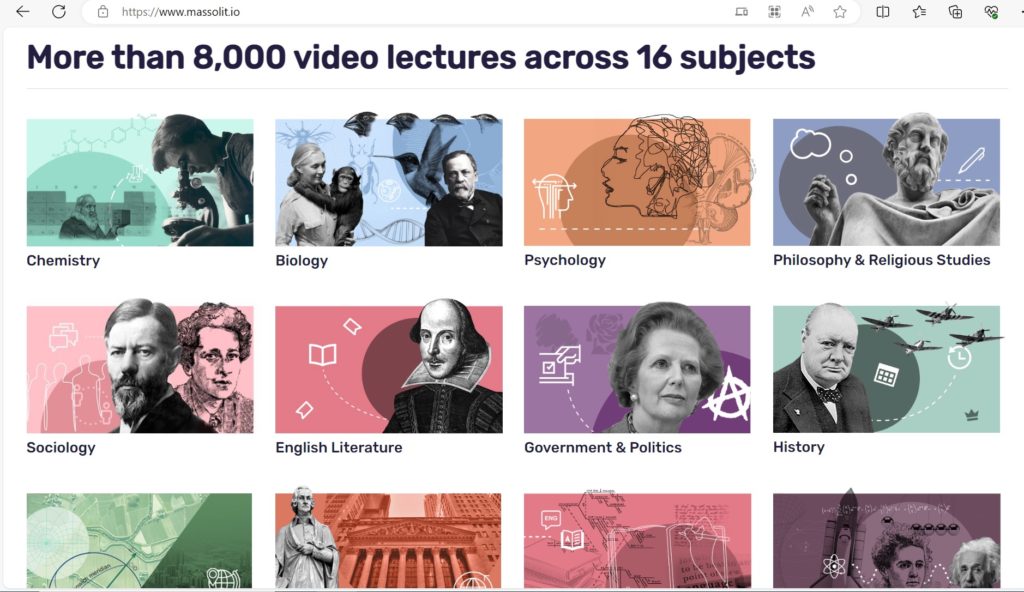
Running a library also requires professional support to ensure that the provision is as good as it can be – ‘you are only as good as your information resources. If your resources are out of date, or all over the place, then you are not going to derive the benefit from the facility that you should.’
Whilst the online resources can be accessed by every pupil from their personal laptops, fitting all the books into St Andrew’s has not been nearly such an easy task, but is one that has been very thoughtfully undertaken. As a conversion that seeks to maintain the historical integrity of the building, standardised bookshelves in which to house the collection were unfortunately out of the question. So, this has left Emily with the interesting challenge of organising a collection in such a way that makes sense for the building as well as for the user.
As we don’t have a straight run of shelves, the standard logic is broken, so we have an opportunity to create subject-specific areas and put books together that make the best sense for the pupil and staff.
Fortunately, among her many talents, Emily hosts a board games club in the Garrett Library and she has put her tangential thinking strategies teased out in those scenarios into play when deciding how to place the books in the spaces offered by St Andrew’s.
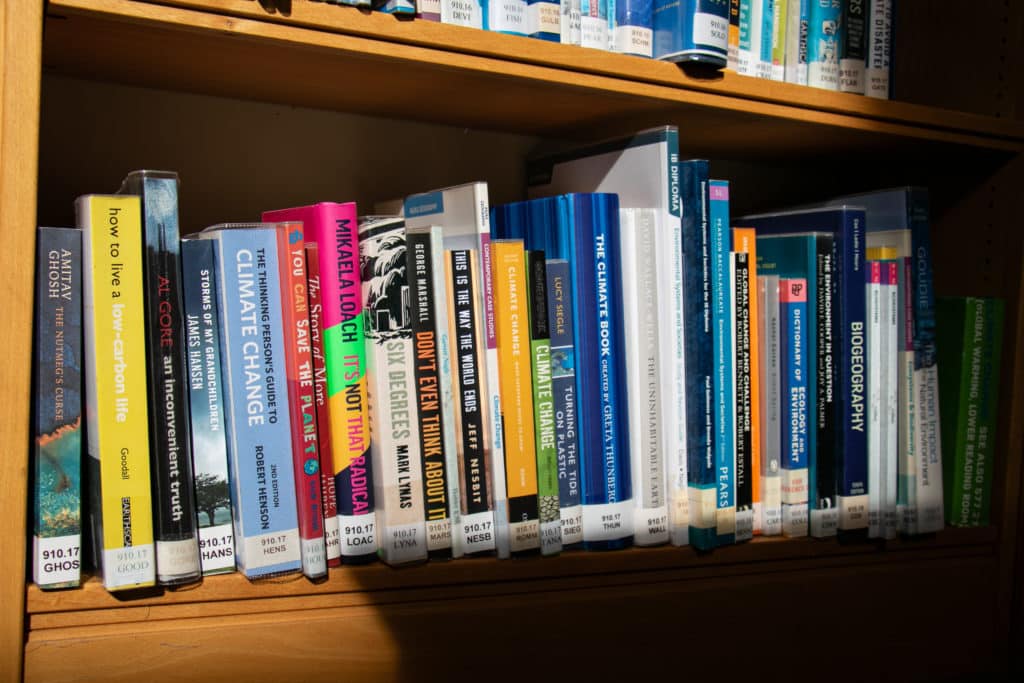
‘Dewey belong together?’
Libraries use a classification system to group related materials together so that they can be easily stored and found. The most common classification system used in British public libraries is the Dewey Decimal Classification and indeed it is this system that has been in operation in Bradfield’s Garrett library to date. Emily explains that whilst Dewey provides a fantastic broad logic for the classification it doesn’t always work for areas where knowledge has progressed, for example in expanding fields such as climate change which has many potential locations. Neither did Dewey know what curve balls the design of St Andrew’s or the new Faulkners’ curriculum would throw into the mix, so to accommodate all these variances, more creative licence was required.
‘to ensure that the collection truly serves the needs of Bradfield pupils I have chosen to overlay Dewey with how the subjects are grouped within the curriculum, creating a hybrid system that is bespoke to Bradfield and the needs of Bradfield pupils’
The largest collection of books is the History collection, this has been given the largest dedicated space available and that is in the majestic Tower room, at the far end of the collaborative study area. The Social Sciences collection is also large and is a very popular section with Bradfield pupils, so Emily has chosen to locate it in the midst of the group study area, where it will be easily accessible to all. She has then chosen to create an Arts area near the Sanctuary, which co-locates many of the materials that will be required by the new Faulkner’s curriculum. Not to leave the scientists out; Maths, Science, Engineering and Computer Science are co-located in the quieter study area and presentation space, whilst medicine is co-located with Psychology and Neuroscience on the shelves as you enter St Andrew’s.
books have not been forced to fit, they have been placed where they belong and this creates an environment that is at ease with itself
If Kevin McCloud from Grand Designs came around the building we can imagine that he might say something like, ‘such are the challenges of working within an old building and serving many masters, however, the non-standard, more organic placement of the collection is in keeping with the space, books have not been forced to fit, they have been placed where they belong and this creates an environment that is at ease with itself.’
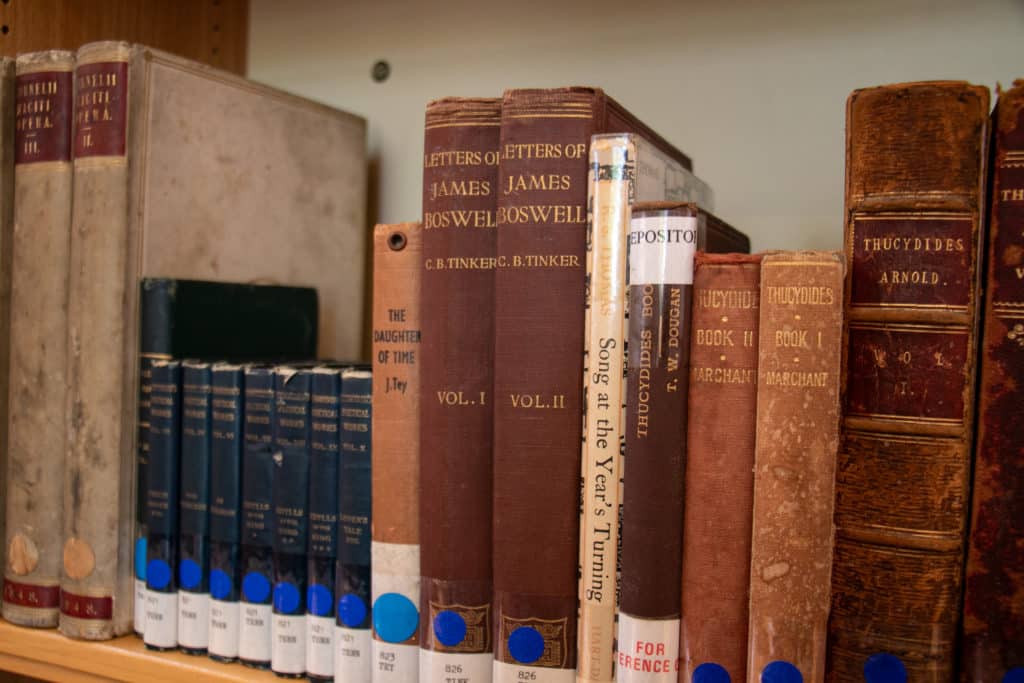
Unlike the main collection that will always be accessible, the Repository Collection, comprised of the older books that have been retained for their academic value but are unlikely to be requested on a frequent basis, will be stored on the higher shelves above 2m where they can be protected, admired from afar and accessed if and when necessary. Other books of significance, including those written by Old Bradfieldians, will be stored within the archive area, where they can provide inspiration to today’s Bradfieldians.
‘St Andrew’s will offer coffee and refreshments but it will not be a refectory’.
St Andrew’s Concept, Neil Burch, Senior Master & Learning Design Lead
St Andrew’s presents a real opportunity for Bradfieldians to take ownership of their own learning, to balance the self-study and group study, and to pace themselves. One feature that holds itself apart from the other study areas at Bradfield is the refreshment area in the North Aisle of St Andrew’s, where pupils have the opportunity to grab a coffee and a snack and take a quick break from their studies or have more casual study-related discussions.
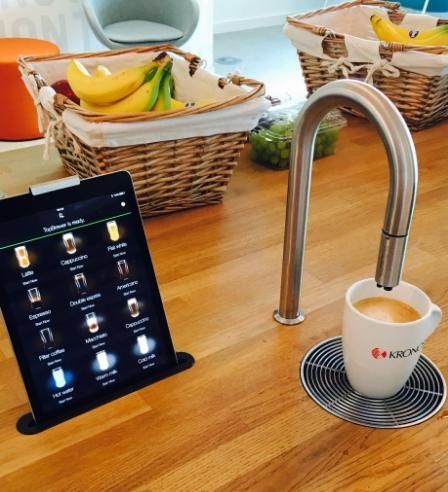
This refreshment area will comprise of 3 iPad-controlled hot drink/water dispensers for tea and coffee on a service counter on the side with bowls of fruit or healthy snacks. All these refreshments will form part of the core provision of the school – like the fruit and drinks offered in the dining halls and will not be charged for. The Stunt Pavilion will still be open if pupils want something more substantial to eat outside of mealtimes.
If St Andrew’s is at the heart of the College, then the information professionals – Emily and her team – are the beating heart of St Andrew’s itself.
A room full of books is not a library, it takes a person, an information professional, to bring the space to life’ in the same way that a room full of beds and medical equipment is not a hospital, you need to put the professionals in there for the place to function.
Emily was attracted into a career as an information professional following a post-university role in PR but left it feeling that she wanted to do something where she could make a difference and have some real impact. She received her Masters in Information and Library Management from Loughborough University, and admits that the course was quite ‘dry’ at times but that she and other coursemates could see that learning the classification systems was a means to an end and beyond that there were many opportunities to be creative and engaging.
In her first few roles as a librarian, she learned how to engage the different types of library users. In the FE College, this meant joining in their discussions and helping them out with projects, which ended up with her co-driving a rally car, being ‘rent a crowd’ for band gigs, and modeling in fashion shows. She had a laugh with the students, but she also developed a positive culture associated with the library and this is something that is very important to her.
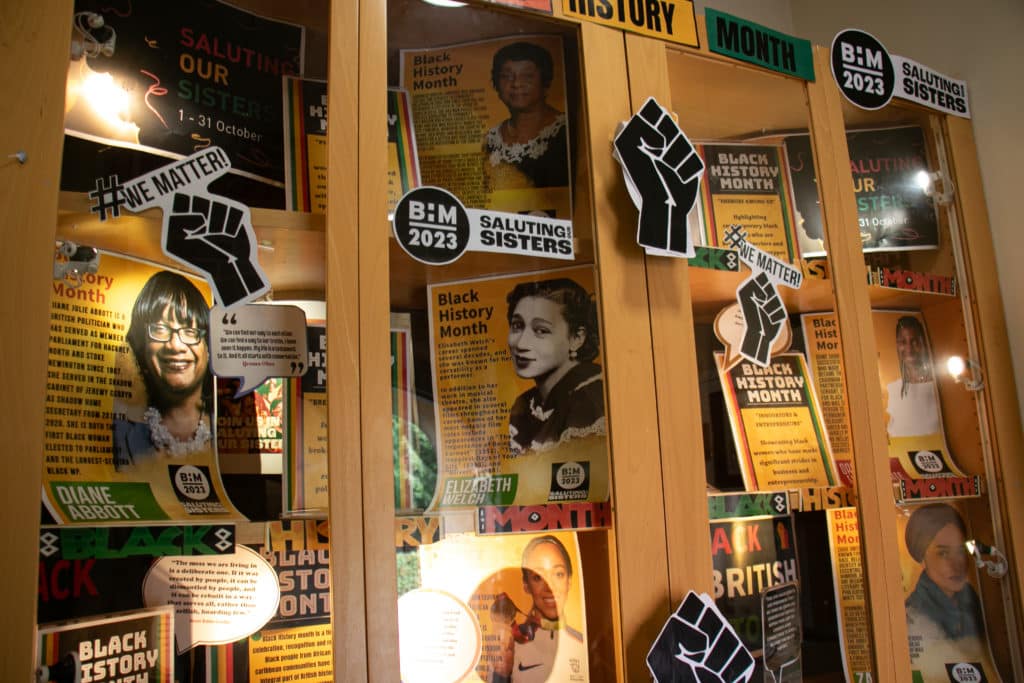
The spirit of the initiatives that Emily ran in FE library she has continued in the Bradfield library and these will transfer across to St Andrew’s. Yes, she wants to ensure that libraries are a great space for those people who are already avid readers and students, but she also wants to make sure that they serve those who have yet to discover the power of this kind of learning environment. So, her team prepares displays associated with serious current affairs topics such as Black History Month, as well as the perhaps more light-hearted enterprises to do with the World Cup – and underneath the draw is to make the library inclusive; A place for everyone to use and benefit from, so we are building positive association and good working practices sometimes by stealth!
Upon her arrival at Bradfield, Emily also started the Diadati society, The Diadati Society – Bradfield College, an intellectual discussion group, this group is reaching its 10 year anniversary and she is looking forward to hosting the many pupils who have enjoyed the society over the years at a reunion – watch this space.
Emily still receives what can only be described as library fan mail from former pupils, sharing pictures of their university study spaces. ‘They will be blown away by St Andrew’s when it’s ready. We’ve worked really hard to create a space for all pupils that will work for different learning styles and also the different stages of their education.’
If you are interested in learning more about the St Andrew’s Project, do visit our dedicated St Andrew’s Project webpage. We are raising funds in support of the build, if you are interested in making a gift to this transformative initiative, why not ‘Be Part of the Project’. For any questions on the project, or the fundraising, Kirsty Perkinson our Philanthropy Lead is here to help, email her on kperkinson@bradfieldcollege.org.uk or call 0118 964 4846.


